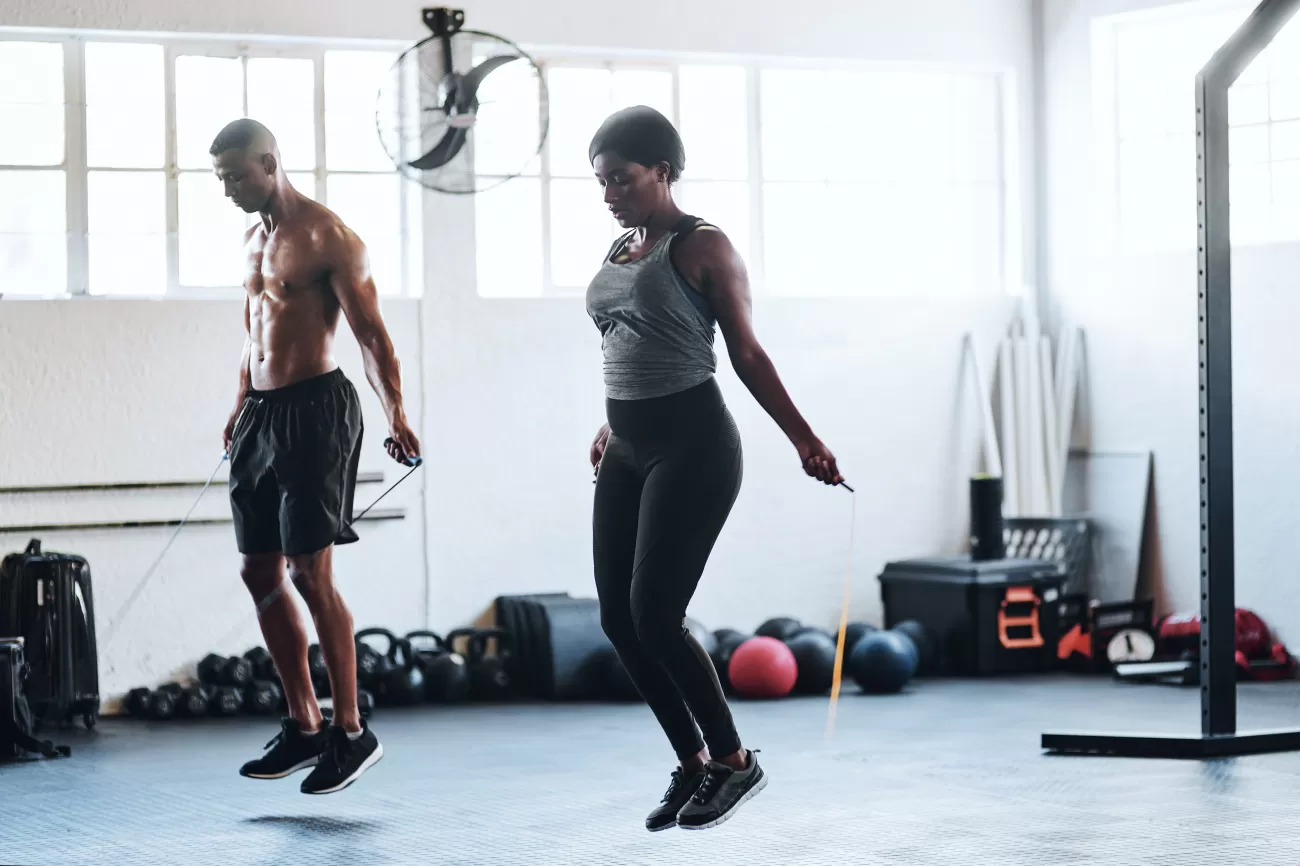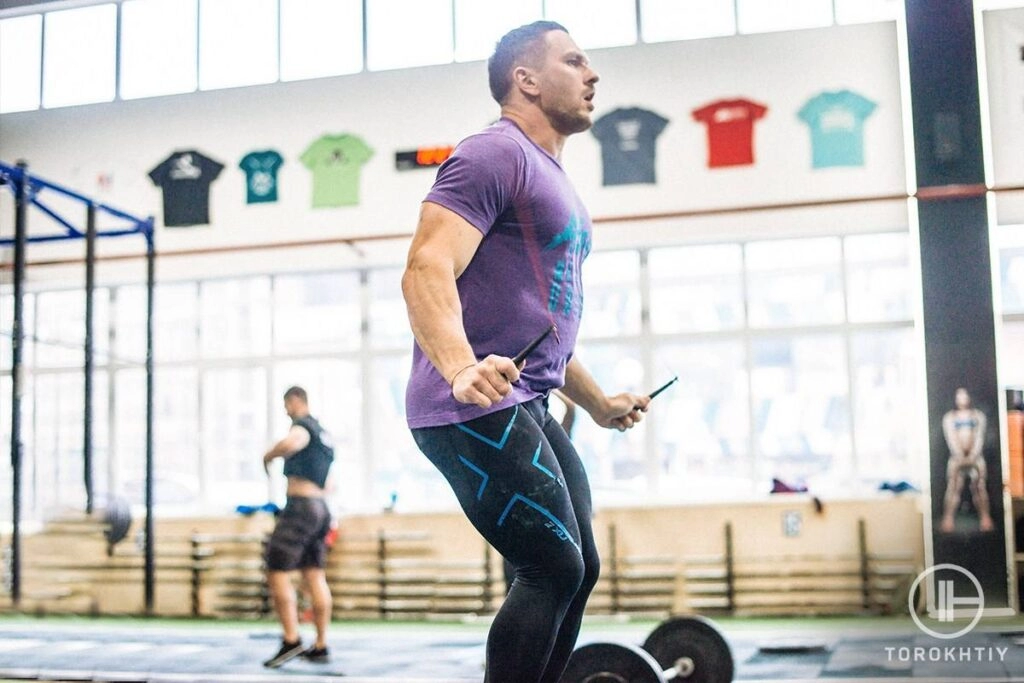Are you wondering if jumping rope is truly a full body workout? You’re not alone! This simple yet powerful exercise is making waves in the fitness world, and for good reason. As experts at PVCJumpRope.com, we’ve seen firsthand how a quality PVC jump rope can transform your fitness routine. In this guide, we’ll break down exactly how jumping rope engages your entire body, share its unique benefits, and show you how to maximize your workouts. Ready to discover why this classic exercise is a game-changer? Let’s jump in!
What Constitutes a Full Body Workout
When trying to figure out is jumping rope a full body workout, we first need to understand what makes a workout “full body.” A full body workout means engaging multiple major muscle groups across your entire body during one exercise session. It’s not just about moving a single limb or isolating one muscle; it’s about activating your upper body, lower body, and core all together to strengthen, tone, and condition your body as a whole.
Key Elements of a Full Body Workout
-
Muscle Engagement
A true full body workout targets muscles in the legs, hips, back, chest, arms, and abdominal region. This balanced approach helps improve overall muscle strength and endurance while preventing imbalances that can lead to injury or poor posture.
-
Cardiovascular and Respiratory Challenge
In addition to muscle activation, full body routines often elevate your heart rate to improve cardiovascular fitness and endurance. This helps with calorie burn and overall heart health—something crucial for anyone interested in jump rope cardio workout benefits.
-
Core Stability and Balance
The core is a key player in any full body workout. Engaging muscles like the abdominals, obliques, and lower back stabilizers supports movement efficiency and injury prevention.
-
Neuromuscular Coordination
Effective full body workouts improve your brain-to-muscle connection, boosting coordination, balance, and agility. This is especially important for exercises involving rhythm and timing.
When these elements combine, you get a workout that is efficient, effective, and supports overall physical fitness. This sets the foundation to understand how jumping rope fits into the full body workout category. Stay tuned to see how this simple tool delivers complex benefits by working your muscles used when jumping rope along with cardiovascular and coordination improvements.
How Jumping Rope Works Your Body Full Body Workout Explained

Jumping rope is more than just a simple cardio move—it activates muscle groups across your entire body, making it a highly effective jump rope full body workout routine.
Lower Body Muscle Engagement
When you jump rope, your calves, quads, hamstrings, and glutes are working constantly to propel and stabilize your body. This repeated jumping motion strengthens these muscles, improves endurance, and helps with explosive power.
Core Activation
Your core muscles including the abdominals, obliques, and lower back stabilizers engage to keep your body balanced and aligned during the quick, repetitive jumps. This makes jump rope an excellent way to build core strength, which supports overall fitness and injury prevention.
Upper Body Muscle Involvement
The shoulders, arms, forearms, biceps, triceps, and wrists all play a role in turning the rope smoothly and maintaining rhythm. This helps improve muscle tone and endurance in these areas, often overlooked in typical cardio exercises.
Cardiovascular Benefits and Endurance
Jump rope is known for its intense jump rope cardio workout benefits. The continuous movement raises your heart rate quickly, improving heart and lung health while boosting your overall endurance. This makes it one of the most efficient ways to improve stamina in a short amount of time.
Neuromuscular Coordination and Balance
Because jumping rope requires timing and rhythm, it sharpens your neuromuscular coordination and enhances your balance. These benefits are great for athletic performance as well as everyday movement, which is why jump rope exercises are popular in many fitness training regimes.
Together, these elements show how jumping rope engages multiple muscles from head to toe, delivering a truly full body jump rope workout that combines strength, cardio, and coordination in one simple routine.
Is Jumping Rope Considered a Full Body Workout
Yes, jumping rope qualifies as a full body workout because it actively engages multiple muscle groups across your body while offering impressive cardiovascular benefits. When you jump rope, you’re not just working your legs—you’re involving muscles in your lower body, core, and upper body simultaneously.
Muscles Used When Jumping Rope
Lower Body: Your calves, quads, hamstrings, and glutes power every jump. These muscles absorb impact, stabilize your movements, and help you maintain rhythm.
Core: Abdominals, obliques, and lower back muscles work to keep your balance and posture tight. A strong core is essential for smooth, controlled jumping.
Upper Body: Shoulders, arms, forearms, biceps, triceps, and wrists control the rope’s rotation. This builds strength and endurance, especially when using faster ropes or advanced techniques.
Jump Rope Cardio Workout Benefits
Beyond muscle work, jumping rope elevates your heart rate quickly, improving cardiovascular health and boosting endurance. This combination makes it an efficient tool for burning calories and improving overall fitness.
Neuromuscular Coordination and Balance
Jumping rope also enhances your coordination, timing, and balance. The rhythm required activates your nervous system, encouraging better control and body awareness.
In short, jumping rope meets the criteria of a jump rope full body workout routine by engaging your entire body and improving cardio, muscle tone, and coordination all at once. For anyone wondering, jump rope is good for weight loss and full body fitness, as it targets various muscle groups and keeps your heart working efficiently.
Benefits of Full Body Jump Rope Workouts
Full body jump rope workouts offer a wide range of benefits that go beyond just burning calories. Because jumping rope engages multiple muscle groups—from your calves and quads to your core and arms—it provides a balanced workout that builds strength, endurance, and coordination all at once.
Efficient Calorie Burn and Weight Loss
Jump rope is known for its high calorie burn per minute, making it a top choice for anyone looking to lose weight or maintain a healthy body composition. Incorporating a jump rope full body workout routine can help you shed fat efficiently while preserving muscle.
Improved Cardiovascular Health and Endurance
The continuous nature of jumping rope improves heart health by boosting cardiovascular endurance. This makes it an effective jump rope cardio workout for anyone wanting to increase stamina and overall fitness.
Full Body Muscle Engagement and Tone
Using multiple muscle groups means you get a muscle-toning effect throughout your body. Your calves, hamstrings, and glutes work with your core muscles—abdominals and obliques—to stabilize your movements. Meanwhile, your shoulders, arms, and forearms get a workout as you keep the rope swinging.
Better Coordination and Balance
Jump rope training enhances neuromuscular coordination and balance. This is especially helpful if you play sports or want to improve your agility and reflexes. The rhythmic nature of jump rope helps your brain and body synchronize movement smoothly.
Time-Saving Full Body Fitness
Because it combines cardio, strength, and coordination in one workout, jumping rope is an efficient option for busy people. You get a full body workout in a short amount of time without needing a gym or fancy equipment.
Suitable for All Levels
Whether you are looking for jump rope exercises for beginners or more advanced routines, full body jump rope workouts can be adapted to your fitness level, making it accessible and scalable.
For more details on routines and tips to maximize your workout, visit our jump rope exercise routine page.
In short, full body jump rope workouts provide cardio, muscle engagement, coordination, and fat loss benefits all in one simple, effective exercise. Whether you want to burn calories, tone muscles, or improve your balance, jump rope can play a key role in your fitness journey.
How to Maximize Your Jump Rope Workout for Full Body Fitness
To get the most out of your jump rope full body workout, it’s important to focus on variety, form, and intensity. Here’s how you can boost your session and target multiple muscle groups effectively while improving cardiovascular health.
Mix Up Your Jump Rope Exercises
- Alternate foot jumps and high knees engage your calves, quads, and glutes differently than standard jumps. This variation targets more muscles and keeps workouts dynamic.
- Try double unders to speed up your heart rate and build arm and wrist strength.
- Incorporate side-to-side jumps and crossovers to engage obliques and improve neuromuscular coordination.
- Use jump rope cardio workout benefits by adding intervals: high-intensity bursts followed by short rests for endurance and calorie burn.
Focus on Proper Form
- Keep your core tight, your shoulders relaxed, and wrists doing most of the turning.
- Jump just high enough so the rope passes—this reduces impact and injury risk.
- Stay light on your feet and land softly to protect your joints while working stabilizing muscles.
Increase Duration and Intensity Gradually
- Start with jump rope exercises for beginners, such as steady single jumps for 1-2 minutes.
- Gradually increase time, speed, or complexity as your endurance improves.
- Use interval training to maximize fat burn and muscle engagement: for example, 30 seconds fast jumping, 15 seconds rest, repeat 8–10 times.
Combine Jump Rope With Strength Moves
- Add bodyweight exercises like squats or push-ups between jumping sets.
- This mix creates a complete full body workout routine, boosting muscle strength and cardio at the same time.
Choose the Right Jump Rope
- Best jump rope for full body workout should be lightweight, durable, and fit your height.
- Consider a jump rope with adjustable length and comfortable handles for better grip and control.
By following these tips, your jump rope sessions will not only burn calories efficiently but also build strength and overall fitness. This approach ensures your workout hits all the right muscle groups while keeping your heart pumping strong.
Who Can Benefit from Jump Rope as a Full Body Workout
Jump rope is a versatile full body workout that suits a wide range of people, making it an ideal fitness choice for many in the U.S. Whether you’re aiming for weight loss, endurance, or just general fitness, here’s who can really gain from adding jump rope exercises to their routine:
Beginners and Fitness Starters
If you’re new to working out or looking for a simple, low-cost way to get moving, jump rope offers an easy entrance. It’s effective for building cardiovascular fitness and can be scaled up as you improve. With beginner jump rope exercises, you gradually improve balance, coordination, and full body strength without overwhelming your system.
Weight Loss Seekers
Jump rope is well-known for its high calorie burn rate—burning more calories per minute than many other cardio workouts. It engages multiple muscle groups, so you get a leaner body faster. If your goal is to lose weight or trim fat, a jump rope full body workout routine can accelerate your results.
Busy Professionals and Home Workout Enthusiasts
No gym? No problem. Jump ropes are affordable and space-friendly, perfect for those with limited time or space. The workout delivers cardio and strength training all at once, so you get more done in less time, improving your fitness efficiently from home or office.
Athletes and Sport-Specific Trainers
Jump rope supports enhancing neuromuscular coordination, agility, and balance—key elements in almost every sport. It’s a great way to complement other training, improve footwork, and boost overall athletic performance without adding heavy impact stress.
Seniors and Those Rehabilitating from Injuries
With proper modifications and a good jump rope for a full body workout that suits your level, slower-paced jumping or low-impact variations can improve bone density, joint mobility, and cardiovascular health, helping maintain fitness safely over time.
In short, jump rope fits almost everyone—from beginners to advanced athletes—delivering comprehensive full body benefits. The key is to choose the right jump rope type, pace, and routine based on your goals and fitness level to maximize the workout’s impact without injury.
If you’re looking for a reliable, efficient, and adaptable way to get a full body workout, jump rope exercises can be your go-to solution.
Common Mistakes in Jump Rope Workouts and How to Avoid Injury
Jump rope is a fantastic full body workout, but doing it wrong can lead to injuries or slow your progress. Here are the common mistakes people make and how to stay safe while getting the most out of your jump rope exercise.
Landing Too Hard
One of the biggest issues is landing heavily on your feet, which puts stress on your knees, ankles, and shins. This can cause shin splints or joint pain.
- Tip: Land softly on the balls of your feet with knees slightly bent. This absorbs the impact and protects your joints.
Using the Wrong Rope Length or Type
Jumping with a rope that’s too long or too short changes your form and wastes energy. Using an inappropriate rope type (like a heavy beaded one when you’re just starting) can also make it tougher to control your movement.
- Tip: Find a jump rope right for your height and skill level. For beginners, a lightweight PVC rope works best for full body jump rope workouts.
Poor Posture and Arm Position
Slouching or holding your arms too far from your body strains your neck and shoulders. This not only tires you faster but increases the chance of upper body injuries.
- Tip: Keep your back straight, core engaged, and elbows close to your sides. Use your wrists to turn the rope, not your whole arms.
Jumping Too High
Trying to jump excessively high wastes energy and can lead to ankle sprains or strains. Jumping only a few inches off the ground is enough to clear the rope and maintain rhythm.
- Tip: Focus on quick, low jumps to improve endurance and coordination while reducing injury risk.
Overdoing It Without Rest
Jump rope is an intense cardio workout that works your legs, core, and arms constantly. Doing too much, too fast, especially as a beginner, may cause muscle strains or joint pain.
- Tip: Start slow and build your time and intensity gradually. Schedule rest days and listen to your body.
Ignoring Warm-Up and Cool-Down
Skipping a warm-up or cool-down can increase injury risk, including muscle cramps or joint stiffness.
- Tip: Always spend 5-10 minutes warming up with light movements and stretching after your jump rope session.
Not Wearing Proper Footwear
Jumping rope in shoes without enough cushioning or support can lead to foot or ankle injuries.
- Tip: Use well-cushioned, supportive athletic shoes made for impact activities.
Jump rope is a great full body workout, but like any exercise, doing it right matters. Pay attention to your form, gear, and limits to make the most of your jump rope cardio workout benefits safely and effectively.



